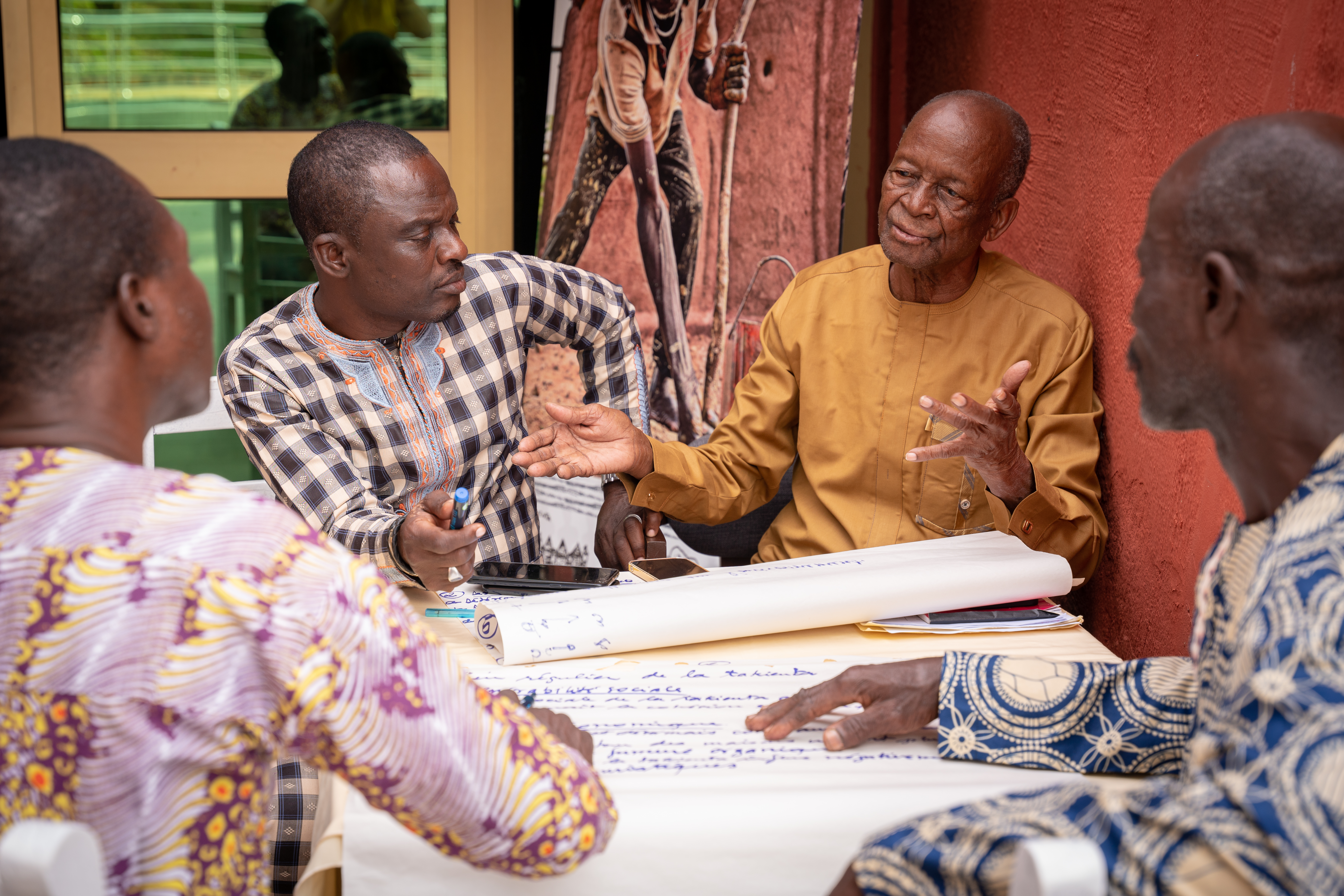Safeguarding Heritage in a Changing Climate
Address structural inequalities
Build understanding
Devolve decision making
Flexible programming and learning
Patient, predictable, accessible funding
Organization: Preserving Legacies
2025 LOCAL ADAPTATION CHAMPIONS AWARD WINNER
What if the key to surviving climate change was hidden in the stories, traditions, and landscapes we have inherited? Across the world, communities are proving that heritage is not just about the past. It is a source of resilience, identity, and innovation.
Communities everywhere are feeling the impacts of a changing climate. In Koutammakou, Land of the Batammariba, torrential rains erode the foundations of centuries-old tākienta, traditional earthen tower houses that embody cultural identity. In the Himalayas, shifting weather patterns threaten ancient transhumant routes. Heritage sites all around the globe, from spiritual shrines to historic cities, face rising seas, floods, fires, and heatwaves.
These impacts threaten not only the physical survival of heritage sites but also the living knowledge systems, cultural practices, and identities they sustain.
Protecting Heritage is Protecting Humanity
Preserving Legacies is a global initiative that empowers communities to lead climate adaptation grounded in their cultural and natural heritage. The initiative partners with heritage custodians that are using ancestral knowledge, science, and collective action to safeguard what matters most: their ways of life, their landscapes, and their legacy.
Since 2023, Preserving Legacies has supported 32 heritage places across 36 locations in 35 countries, enabling 74 custodians to lead adaptation efforts and reaching more than 470 local changemakers. The heritage custodians, who set the priorities, include community leaders, heritage managers, government officials, spiritual leaders, researchers, youth, and women. Preserving Legacies provides them with training, funding, toolkits, and regional data hubs that deliver downscaled climate projections tailored for heritage contexts.
-384-youth-building.jpg)
In Koutammakou, in northern Benin and Togo, the community is blending ancestral building practices with new technologies. Drone imaging and GIS mapping monitor structural risks to tākienta, while elders and master builders train youth and women in climate-resilient construction. At the same time, reforestation with sacred tree species helps restore ecological balance, while inclusive governance platforms ensure that adaptation decisions are guided by and rooted in community values.
These actions are not isolated. They are shared across continents, connecting custodians of Petra in Jordan, historic cities in Africa, island communities in Oceania, and indigenous landscapes in the Americas. Each site learns from the others, showing that although climate impacts vary from place to place, communities everywhere are capable of drawing on their own strengths and traditions to adapt and endure.
-380_michael-o.-snyder.jpg)
An Inclusive Process Led by Communities
Preserving Legacies follows a four-year cycle that places communities firmly at the center of climate adaptation. The process begins with building climate literacy grounded in local values, then moves into participatory risk assessments, the design of adaptation strategies, and finally, the amplification of lessons and solutions to a wider network.
At every stage, decisions are shaped by those who live with and safeguard the heritage. Heritage custodians, elders, women, youth, artisans, spiritual leaders, local officials, and researchers all take part in mapping risks, envisioning futures, and choosing priorities for action. This collaborative approach ensures that adaptation plans are not only scientifically informed but also culturally relevant, socially just, and widely owned within the community. By valuing diverse voices and knowledge systems, Preserving Legacies strengthens both the legitimacy and the sustainability of the actions taken.

A Call to Protect What Matters Most
Preserving Legacies shows that adaptation is most powerful when it is locally led, culturally grounded, and globally supported. By protecting heritage, they are not only safeguarding places and traditions but also building resilience, identity, and hope in the face of climate change.
Looking to the future, the initiative is scaling up to reach 3,000 heritage sites and cultural practices by 2030, launching a global Community of Action in 2026, expanding regional data hubs to democratize climate data, and strengthening advocacy. These efforts will ensure that the voices of custodians resonate not just locally but in national and global climate policy, making heritage a recognized and resourced pillar of climate action.